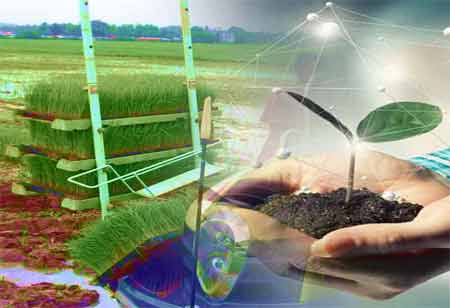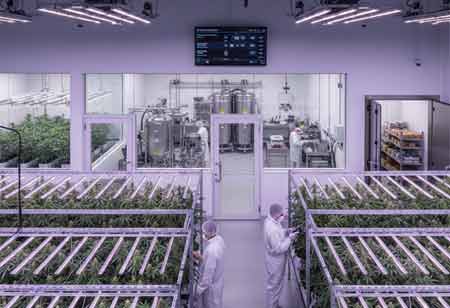Thank you for Subscribing to Cannabis Business Insights Weekly Brief
Cannabis Technology Innovations
Genomic sequencing and cannabinoid biosynthesis are technologies to look at in the future years.

By
Cannabis Business Insights | Wednesday, April 26, 2023
Stay ahead of the industry with exclusive feature stories on the top companies, expert insights and the latest news delivered straight to your inbox. Subscribe today.
Nowadays, e-commerce is mainly used to display products to consumers, making the buying experience seamless and quick.
FREMONT, CA: Genomic sequencing and cannabinoid biosynthesis are technologies to look at in the future years. A cost-effective method for generating cannabinoids like THC, CBN, and CBD is presently being developed and utilized in labs worldwide.
Another trend in cannabis cultivation technology is inventive e-commerce solutions for farmers and other license types. Nowadays, e-commerce is mainly used to display products to consumers, making the buying experience seamless and quick. Briefly, cultivators will initiate to witness more online services, like private digital storefronts, to list their products wholesale or to consumers.
Cannabis Technology Innovations
Crop Steering
One of the major trends in indoor cultivation is crop steering. Marijuana plants possess hormonal systems controlling their growth in response to external stresses. Crop steering exploits these hormonal responses by manipulating a governed environment to accomplish a desired outcome – like greater yields. Cultivators can lead their plants with climate by increasing or decreasing humidity or with irrigation by expanding or lowering the substrate's WC (water content).
When a plant is focused on producing leaves and stems, it is considered to be in vegetative development. Contrarily, when a plant focuses on developing cannabis flowers, it's considered generative growth. Precise 'steering' techniques encourage plants to enhance flower production at the perfect time in their growth cycle.
Generally, commercial cannabis production intends to maximize return by optimizing plants' time in vegetative growth to ensure they produce enough foliage and stems to support vigorous cannabis flower production.
Crop steering is accomplished with sensors, controls, and tracking of how climate and irrigation affect plant growth at each growth cycle stage. Trym integrates with several awesome companies in the cannabis space, like Trolmaster and Growlink.
Whether growing cannabis in a greenhouse or indoors, lighting and CO2 regulation are vital for optimal plant development. These hardware systems automate supplemental lighting, shade systems, and CO2 regulation control. Sensors monitor environmental conditions, such as soil & climate, and automate irrigation systems to nourish the plants just what they require when they require it.
Marijuana technology solutions such as software and hardware enable growers to create optimal conditions. In Trym, you can structure specific zones for monitoring and tracking all the sensor data, such as substrate temps, WC, and EC. And most significantly, make observations in the app about your crop throughout its growth cycle. The ability to upload notes and photos and log measurements in Trym enables cultivators to fastly learn how their plants respond to shifts in climate and feeding regiments.
Vertical Farming
Vertical Farming has taken off in the cannabis industry in the last five years. As with most cannabis technology inventions, grow equipment has been advanced for the cannabis industry's unique requirements. New product innovations and advancements are freed yearly.
The equipment and technology around vertical Farming include multi-level racking systems that keep custom-fitted grow trays. The racks are portable side to side and optimize the square footage of cultivated space, both vertically and horizontally. Air ventilation systems have been devised for these setups to guarantee even airflow via the vertical tiers where plants are found.
Vertical Farming demands a first investment to buy all the components, so it may not be available to smaller grows. But, those waiting to save on energy costs long-term (LED lights are employed because of closeness to the plants) and magnify the yields delivered in their facility can make that investment up front to obtain the advantages over the future years.
Genetic Engineering
The third arising cannabis technology we'll cover is gene editing, also named Crispr-Cas9 or Crispr for short. Breeders have been crossing strains and choosing phenotypes for alluring traits for generations. With gene editing, years of breeding actions are relieved to weeks to design new strains that stretch the borders of the cannabis plant's expression.
CRISPR technology straightly alters the plant's DNA but doesn't instruct foreign DNA into the mix, and thus isn't the same as GMO editing. Some people are against intruding on DNA and "playing God." It's difficult to argue that humans haven't been directing the plant's development.
Cultivators have a close relationship with the plant and have formed its genetic structure via intense cross-breeding actions. Some say the marijuana plant is the most hybridized and crossed plant worldwide. Therefore, consider Crispr as the high-tech edition of breeding.
Numerous traits can be separated and improved through gene editing, like:
• Disease opposition
• Pest resistance
• Climate Forbearance
• Terpene and cannabinoid choosing
• Grow trichomes
• CBD/THC ratio
• Biomass advancement






